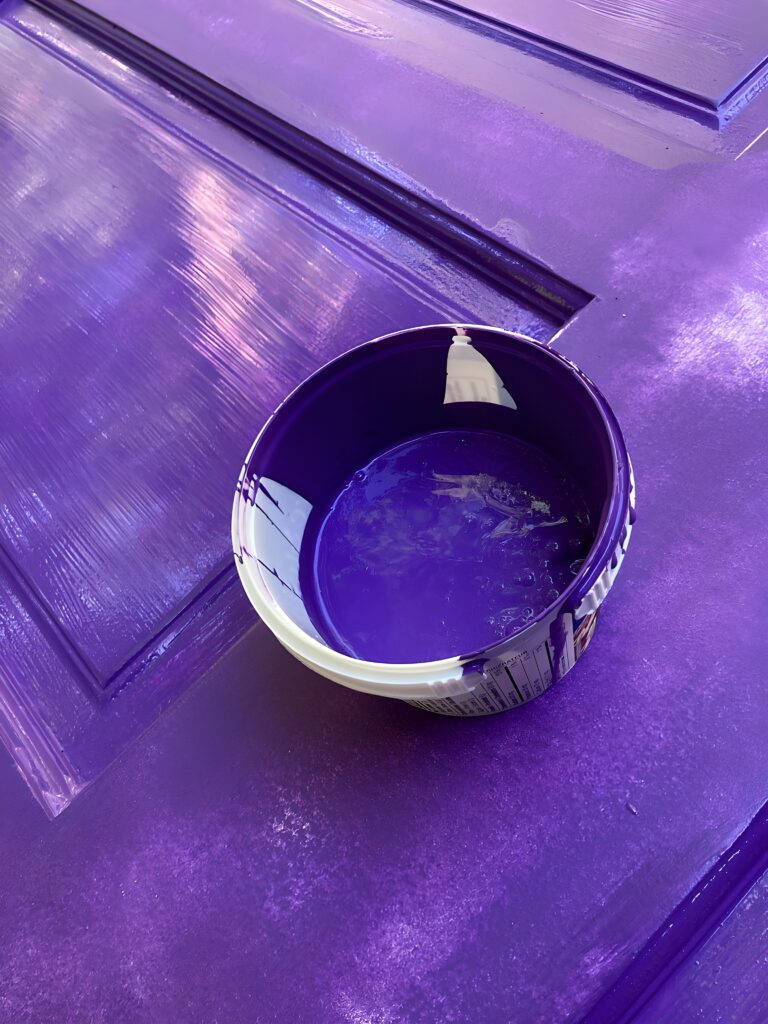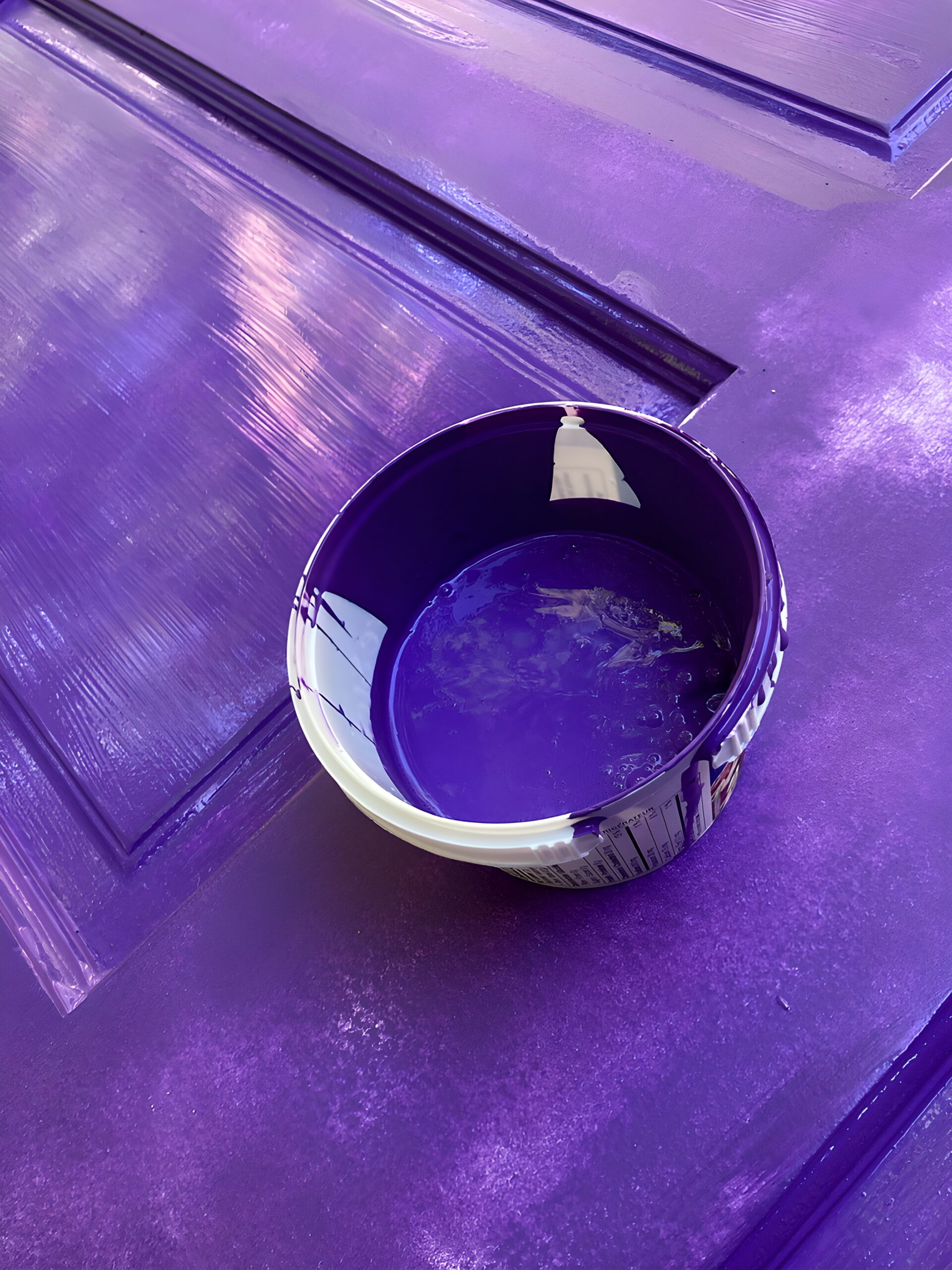Introduction
In this photograph, a single bowl of purple paint becomes the centerpiece of a world awash in vibrant hue. This image captures the essence of simplicity and immersion, where form and color merge into a seamless visual experience. For photographers, artists, and creatives alike, this is a meditation on color theory, texture, and composition.
1. Visual Analysis: A World of Purple
This photograph is a masterclass in monochromatic design. The subject—a simple bowl filled with purple paint—transcends its ordinariness to become a focal point of energy and serenity.
- Composition: The bowl sits slightly off-center, adhering to the rule of thirds. Diagonal lines of the painted surface draw the viewer’s eye toward the paint’s smooth, reflective surface, adding depth and visual flow.
- Color: Monochromatic purple dominates, with subtle variations in shade and sheen. The interplay of deep violet and lighter reflections creates contrast without breaking the visual unity.
- Texture: The surface reveals layers of texture—brush strokes, soft imperfections, and the glossy wetness of the paint. The bowl’s smooth curves juxtapose against the rough linear grooves of the panel, creating tactile interest.
- Lighting: Soft, diffused light enhances the reflective quality of the paint while preventing harsh highlights. This choice allows the viewer to appreciate the subtle gradations of color and texture.
2. Philosophical Reflection: The Zen of Monochrome
This image is an invitation to find peace in the simplicity of color and form. The single hue eliminates distraction, encouraging stillness and deep observation.
- Unity and Immersion: The paint, the bowl, and the surface become one. There is no separation between content and container—just as life itself is interconnected.
- Impermanence and Creation: The wet paint reminds us of transience; it is in a state of becoming. Soon, it will dry, fixed in place, yet for now, it holds the essence of movement and potential.
- Mindful Observation: Much like Zen practice, the image demands presence. To see the beauty in texture, reflection, and subtle imperfections is to slow down and notice what is often overlooked.
3. Practical Photography Insights: Capturing Color and Minimalism
For photographers seeking to replicate this impact, this image provides practical lessons:
- Master Monochrome: Choose a dominant color and explore its nuances. Monochromatic palettes simplify the visual message while allowing for subtle exploration of tone and texture.
- Focus on Texture: Use light and framing to highlight differences in texture—smooth surfaces against rough, glossy reflections against matte backgrounds.
- Play with Perspective: A close-up or slightly elevated angle can emphasize the subject’s immersion in its environment, as seen here.
- Utilize Negative Space: The simplicity of the background keeps attention on the paint and bowl while adding breathing room to the composition.
Pro Tip: Soft, natural light works best when emphasizing texture and color gradation. Avoid harsh direct light that could overwhelm or wash out the subject.
4. Reflections: The Creative Stillness of Paint
This image speaks to the act of creation—the moment before a brush touches the surface, the stillness before transformation begins. It is a snapshot of potential, where something as ordinary as paint becomes extraordinary.
The bowl itself holds a quiet elegance, symbolic of focus and intention. The door beneath, already painted, reflects the act of process—the before and after coexisting in a single frame.
There is something meditative in the sheer simplicity of this image. It is not loud or chaotic. It does not shout for attention. Instead, it whispers:
- Pause.
- Observe.
- Immerse yourself.
In this still moment, we are reminded that beauty is often found not in complexity, but in the quiet harmony of color, form, and light.
Conclusion
Whether viewed as an exploration of monochromatic color theory, a meditation on stillness, or an exercise in minimalist photography, this image resonates deeply. For creatives, it is a reminder that the ordinary—when seen through an attentive lens—can become extraordinary.

